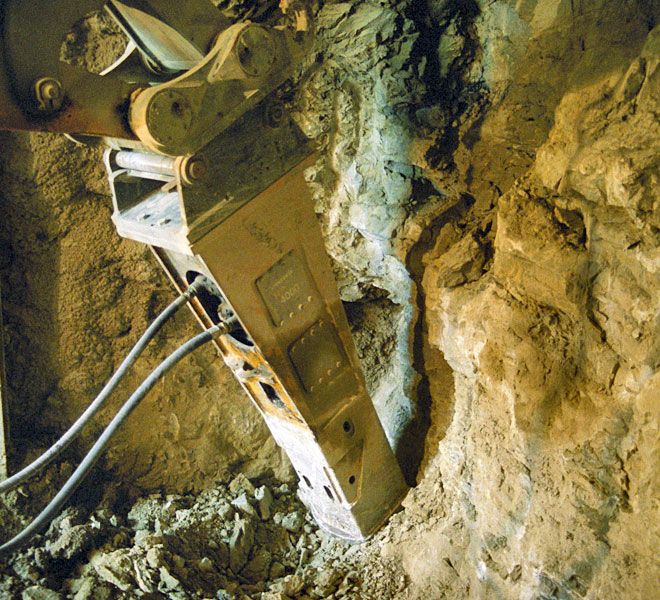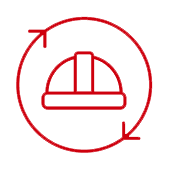An Indeco HP 4000 for the new Lausanne metro link
An Indeco HP 4000 hydraulic beaker is working on one of the tunnels along the new M2 metro line in Lausanne.
The new M2 metro line in Lausanne is part of a much vaster plan for developing the metro line, which aims to make the local transport network far more powerful. The six-kilometre long section will be mainly underground, featuring 4.5 kilometres of tunnels.
This important public works project seeks to reduce the number of vehicles on the city’s roads by 6000 a day, thus improving traffic flows and pollution levels. This new metro link will be connecting the upper part of the city with the lower end, dropping no less than 375 metres in the process.
The new M2 line poses some difficult questions for its constructors: the main issues are connected with the type of tunnels required – the section goes straight through the heart of the city, following the main thoroughfares and skirting important public and private-owned buildings. All this makes the excavation works particularly complex, and involves a number of tricky logistical decisions.
First of all, the planners had to take into account factors linked with consolidating and underpinning walls close to the buildings affected. When the project is completed, over 350,000 cubic metres of rock will have been excavated, with about 10,000 tons of steel and 100,000 cubic metres of concrete being used to reinforce it.
An HP 4000 for the Chuv tunnel
Located about halfway along the M2, the area around Chuv station raises some particularly delicate issues. The stop lies very close to the biggest hospital complex in Lausanne, and is located on a curved section on quite a steep incline. The station will be built on an open 94-metre wide trench, located at the entrance to two tunnels. The southern tunnel, heading down towards the lake, is 500 metres long, and will be excavated solely by the hydraulic breaker, which will need to remove a volume of around 35,000 cubic metres.
The rock is mainly made up of calcareous formations, which in places is extremely hard, but less so in others. The sheer volumes of material that needed to be removed, combined with the need to work double shift to meet the deadlines agreed, the choice of breaker was a vital one for getting the right productivity. After evaluating various breakers, the company went for an Indeco HP 4000, as they felt it was the right size and provided the right performance for the project.
Built for reliability and productivity
The intelligent hydraulic system enables the HP 4000, like all the other breakers in the Indeco range, to raise or lower the frequency of the blows according to the hardness of the material being demolished, which leads to huge increases in productivity.
This is clearly demonstrated on the Lausanne jobsite, where the consistency of the rock varies enormously from one place to another. The dual shock absorber system gave the best results with the movable arm, which was thus subjected to the least amount of vibration possible. This advantage is due to its excellent weight/power ratio, which significantly reduces the wear and tear on the mounting bracket and the pins on the excavator arm.
Perfect hydraulic combination with the excavator means great productivity, which has been measured at 40 cubic metres per hour. This figure is of course affected by the logistical complexity of the jobsite, the restricted working area and the width of the tunnel (just over 10 metres).








